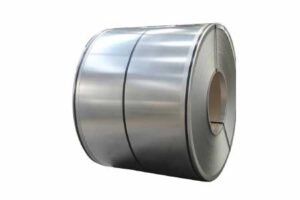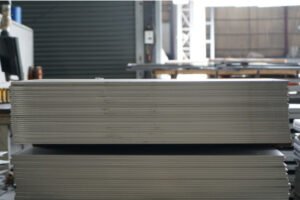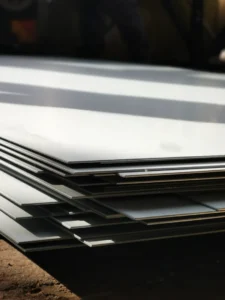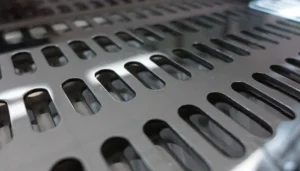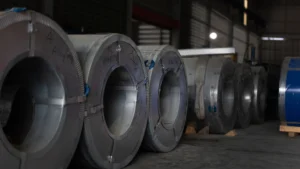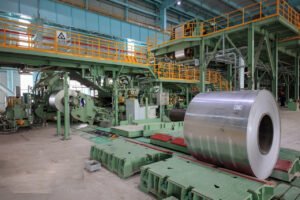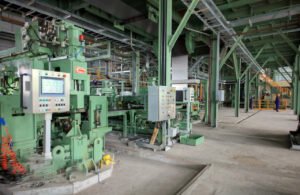Pinpointing the Cause of Stainless Steel Pinholes and Our Quality Control Solution
Struggling with tiny pinholes that compromise your stainless steel projects? These seemingly minor flaws can lead to major structural failures and costly rejections, damaging your bottom line and reputation.
Pinpointing the cause of stainless steel pinholes involves analyzing the melting and solidification process for gas entrapment and contaminants. Effective quality control solutions, like advanced non-destructive testing (NDT) and rigorous process monitoring, are crucial for prevention and detection, ensuring product integrity.

These microscopic imperfections can cause major headaches for any business relying on high-quality steel. In my years as Global Business Director at MFY, I've seen firsthand how a proactive, technology-driven approach to this challenge separates reliable suppliers from the rest. It's not just about finding defects; it's about understanding their origin to build a production process that prevents them from ever forming. Let's break down what these defects are, where they come from, and how we ensure they never reach our clients.
What Are Stainless Steel Pinholes and Why Are They a Problem?
You see a perfect steel surface, but tiny holes are hiding. These pinholes seem minor but can lead to major structural or corrosion issues later, jeopardizing your entire project.
Stainless steel pinholes are small, pore-like surface defects caused by trapped gas or impurities during manufacturing. They are a significant problem because they weaken the material's structural integrity, create corrosion initiation sites, and spoil the aesthetic finish, leading to product failure and rejection.

At their core, pinholes are more than just cosmetic blemishes; they are critical failures in the material's structure. Think of them as tiny voids or bubbles that get frozen in place as the molten steel solidifies. While they may be invisible to the naked eye, their impact is significant and far-reaching. I remember a case with a client in the food processing industry. A batch of tanks developed pinholes, which became breeding grounds for bacteria, rendering the equipment unusable and forcing a costly recall. It was a harsh lesson on why surface perfection is non-negotiable in certain applications. These defects fundamentally compromise the very properties that make stainless steel a premium material. They act as weak points, disrupting the material's internal crystalline structure and creating stress risers that can lead to cracks under load. More importantly, they breach the passive chromium oxide layer[^1] that gives stainless steel its renowned corrosion resistance, opening the door for rust and degradation.
The Microscopic Threat
A pinhole is a cavity. It's a tiny pocket where steel should be, but isn't. This void can be on the surface or just below it, but either way, it disrupts the homogeneity of the material. This isn't just an aesthetic issue; it's a structural one.
The Ripple Effect of a Tiny Flaw
The impact of a single pinhole can cascade, causing different problems across various industries. It's a universal point of failure that manifests in specific ways depending on the application.
| Industry | Primary Impact of Pinholes | Consequence |
|---|---|---|
| Construction | Reduced structural integrity and fatigue life. | Risk of premature failure in beams, supports, and cladding. |
| Food & Beverage | Creates sites for bacterial growth, compromises hygiene. | Contamination, product recalls, non-compliance with health codes. |
| Automotive | Weakens components, initiates corrosion in exhaust systems. | Reduced component lifespan, safety risks, aesthetic degradation. |
| Medical Equipment | Compromises sterility and can lead to corrosion. | Risk of infection, equipment failure during critical procedures. |
What Causes Pinholes to Form in Stainless Steel Products?
Pinholes appear on your finished product, but where do they come from? The root cause is hidden deep within the production process, making prevention difficult without expert knowledge.
Pinholes are primarily caused by gas entrapment during the steel's solidification phase. Gases like hydrogen, nitrogen, and oxygen, dissolved in the molten metal, form bubbles that get trapped as the steel cools. Contaminants and impurities in the raw materials can also act as nucleation sites.
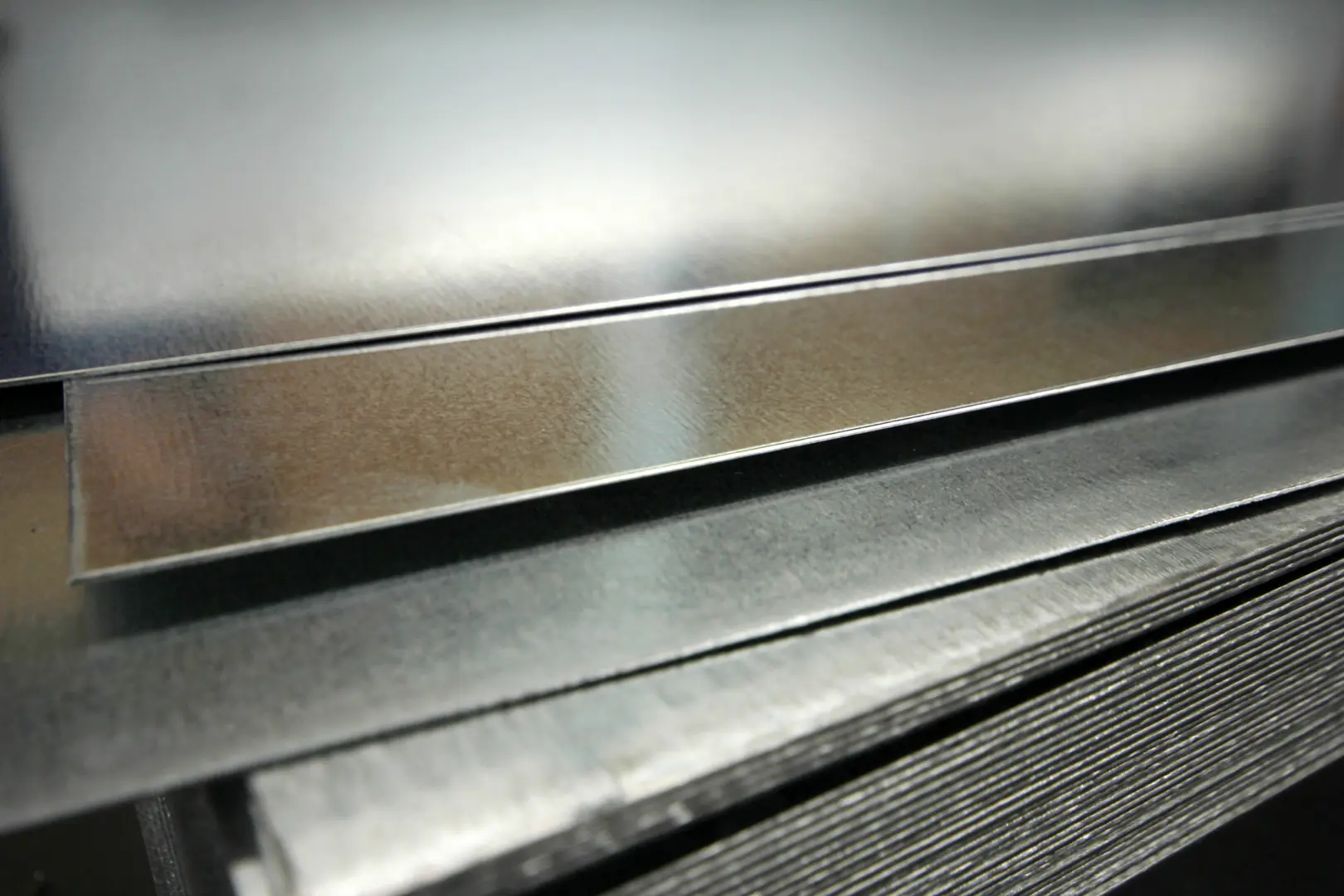
The creation of a pinhole is a story of physics and chemistry happening at over 1,400°C. When steel is in its molten state, it can dissolve a significant amount of gas, much like sugar dissolves in hot water. The problem arises when the steel begins to cool and solidify. As it cools, its ability to hold these dissolved gases drops dramatically. The excess gas is forced out of the solution and forms tiny bubbles. If these bubbles don't have enough time or buoyancy to escape to the surface before the steel solidifies around them, they become trapped forever as pinholes. This is why controlling the entire melting and casting process with extreme precision is not just a goal at MFY; it's a fundamental requirement. Every variable, from the moisture content of our raw materials to the atmospheric pressure in the furnace, is monitored because we know it directly impacts the final quality of the steel.
The Gas Entrapment Problem
The primary culprit is gas. These gases can be introduced from several sources, and controlling them is key to producing defect-free steel. It's a constant battle against the elements.
Contaminants as a Catalyst
While gas is the direct cause, other factors can make the problem worse. Impurities in the melt can act as "nucleation sites," which are basically surfaces that make it easier for gas bubbles to form.
| Cause of Pinholes | Common Source | MFY's Prevention Strategy |
|---|---|---|
| Hydrogen Gas | Moisture in scrap metal, alloys, or atmospheric humidity. | Pre-heating raw materials, controlled furnace environment. |
| Nitrogen Gas | Exposure to air during melting and pouring. | Argon shrouding, optimized furnace sealing. |
| Oxygen Gas | Incomplete deoxidation of the molten steel. | Precise addition of deoxidizers like silicon and aluminum. |
| Impurities | Slag, dirt, or refractory particles in the melt. | Strict raw material vetting, clean ladle and tundish practices. |
How Do Pinholes Affect the Quality and Performance of Stainless Steel?
You've invested in premium stainless steel for its durability. But unseen pinholes can drastically reduce its lifespan and performance, leading to unexpected failures and tarnishing your reputation.
Pinholes severely degrade stainless steel quality by creating stress concentration points that reduce mechanical strength and fatigue life. They also breach the protective passive layer, making the material highly susceptible to localized corrosion like pitting, which can lead to premature structural failure.

The danger of a pinhole lies in its ability to amplify stress and invite corrosion. It's a classic case of a small flaw causing a catastrophic failure. Mechanically, a pinhole acts like a tiny notch. When the steel is put under tension or load, the stress flows around this void, concentrating at its edges. This means a small, localized area experiences a much higher stress level than the rest of the material, making it the most likely point for a crack to start. From a chemical perspective, the pinhole is an open wound in the steel's armor. The passive layer of chromium oxide is what makes stainless steel "stainless." It's a tough, invisible film that protects the iron underneath from oxygen and moisture. A pinhole is a physical breach in this layer, exposing the vulnerable steel beneath to the environment. Aggressive elements like chlorides can then attack this exposed area, leading to a form of localized corrosion called pitting, which can eat through the material surprisingly quickly.
Compromising Mechanical Integrity
The structural impact is real and measurable. A material with pinholes will not perform to its specified strength, especially under dynamic or cyclical loads where fatigue becomes a major concern.
The Gateway to Corrosion
Corrosion resistance is often the primary reason for choosing stainless steel. Pinholes directly undermine this critical property, turning a long-lasting material into one that can fail prematurely.
| Performance Metric | Steel Without Pinholes | Steel With Pinholes |
|---|---|---|
| Tensile Strength | Meets or exceeds specification. | Reduced, with unpredictable failure points. |
| Fatigue Life | High, withstands millions of cycles. | Significantly lower, prone to early cracking. |
| Corrosion Resistance | Excellent, passive layer is uniform. | Poor, susceptible to localized pitting corrosion. |
| Surface Finish | Smooth and hygienic. | Compromised, can trap contaminants. |
What Quality Control Measures Can MFY Implement to Detect and Prevent Pinholes?
Finding microscopic pinholes feels impossible. Relying on visual inspection alone is a recipe for disaster. We use advanced technology to ensure nothing gets missed, protecting your investment.
At MFY, we implement a multi-layered quality control strategy. This includes strict raw material inspection, optimized melting and casting parameters to minimize gas, and advanced Non-Destructive Testing (NDT) methods like ultrasonic and eddy current testing on finished products to detect any subsurface defects.

Our philosophy on quality control is simple: prevention is better than detection. We build quality into every step of our process, from the moment raw materials arrive at our facility to the final inspection of the finished coil or pipe. This proactive approach is built on a foundation of data-driven process monitoring. We track hundreds of variables in real-time during the melting and casting stages, using predictive analytics to identify conditions that could lead to gas porosity. However, we know that even the best processes need verification. That's why we've invested heavily in a suite of Non-Destructive Testing (NDT) technologies. These tools allow us to see inside the steel without cutting or damaging it, giving us a complete picture of its internal and surface quality. I remember when we commissioned a new eddy current system for our pipe production line. Within the first week, it caught a series of micro-pinholes that would have been invisible to the naked eye. That single catch prevented a faulty batch from reaching a major construction project in Dubai, saving our client from potential disaster and reinforcing our belief in technology-driven quality assurance.
Proactive Prevention at the Source
The best way to deal with pinholes is to never let them form. This requires absolute discipline in the earliest stages of production, where we can control the variables that matter most.
Advanced Detection with NDT
For verification, we rely on technology that goes beyond human sight. NDT is our final shield, ensuring that any potential flaw that might have slipped through our process controls is identified and removed.
| NDT Method | How It Works | Best For Detecting |
|---|---|---|
| Ultrasonic Testing (UT) | High-frequency sound waves are sent into the material; echoes reveal internal flaws. | Subsurface pinholes, voids, and inclusions. |
| Eddy Current Testing (ET) | An electromagnetic coil induces currents in the steel; defects disrupt the current flow. | Surface and near-surface pinholes and cracks. |
| Liquid Penetrant Testing (PT) | A colored dye is applied and seeps into surface-breaking flaws, making them visible. | Surface-breaking pinholes and cracks. |
What Are the Best Practices for Maintaining Stainless Steel Quality During Production?
Quality isn't a single check; it's a continuous process. Inconsistent production can lead to defects like pinholes. A systematic approach ensures every batch meets the highest standards.
Best practices include rigorous raw material vetting, precise control over furnace atmosphere and temperature, proper deoxidation and degassing techniques, and maintaining clean casting equipment. A culture of continuous improvement, backed by data analysis and regular equipment calibration, is also essential for consistent quality.
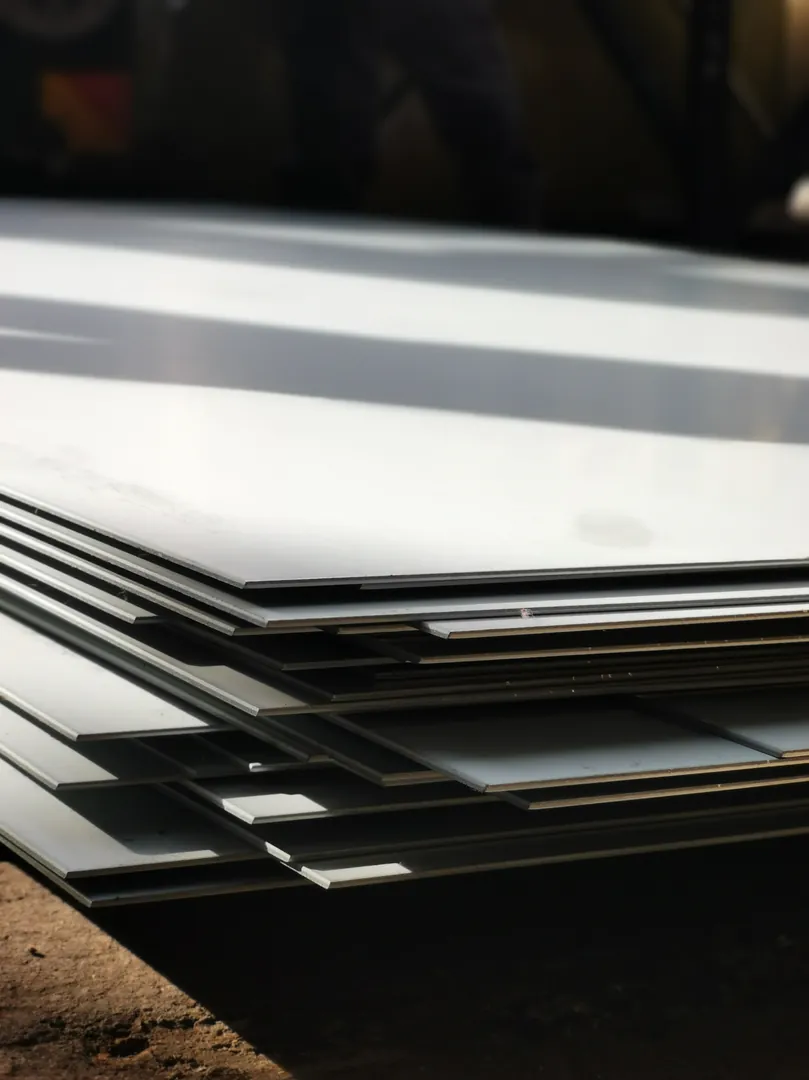
Maintaining consistent quality across thousands of tons of steel is the ultimate challenge in our industry. At MFY, we achieve this not through a single magic bullet, but through a holistic system built on discipline, technology, and people. It starts with the simple principle of "good inputs lead to good outputs." But it extends far beyond that. It's about having robust Standard Operating Procedures (SOPs) for every single task, from charging the furnace to calibrating our NDT equipment. It’s about empowering our operators with the training and tools they need to be the first line of defense against defects. We foster a culture where quality is everyone's responsibility. We analyze data from every heat, looking for trends and opportunities for incremental improvement. This continuous feedback loop allows us to refine our processes constantly, making them more stable, reliable, and less prone to variations that can cause defects like pinholes. This relentless pursuit of operational excellence is what underpins our promise of quality and allows us to build the long-term trust that is the foundation of our business.
The Foundation: Raw Material Control
You cannot make clean steel from dirty materials. The first and most critical step in preventing pinholes is ensuring the purity and consistency of everything that goes into the furnace.
The Core: Process Discipline
A world-class facility is only as good as the processes that run it and the people who execute them. Discipline and standardization are the bedrock of repeatable, high-quality production.
| Production Stage | Quality Assurance Checklist Item |
|---|---|
| Raw Material Reception | Verify chemical analysis certificates; conduct moisture tests. |
| Furnace Charging | Follow precise charging sequence to minimize oxidation. |
| Melting & Refining | Monitor temperature and atmosphere in real-time; conduct sample analysis. |
| Deoxidation/Degassing | Ensure correct type and amount of additives; verify vacuum levels. |
| Casting | Maintain tundish and mold cleanliness; control casting speed and temperature. |
| Final Inspection | Perform comprehensive NDT and dimensional checks. |
Conclusion
Pinholes are a preventable defect. By understanding their root causes in the production process and implementing a rigorous, technology-driven quality control system, we at MFY ensure our stainless steel delivers the structural integrity and flawless finish your projects demand, every single time.
Have Questions or Need More Information?
Get in touch with us for personalized assistance and expert advice.


